Every month Kickstarter is full of wild successes, and depressing failures. While some are always going to have that massive fan push behind them to see hundreds of thousands of dollars in funding others barely make it to the finish line. Due to the nature of Kickstarter, there’s simply not enough money to go around to fund every worthwhile campaign. The purpose of this post is to shine a light on those campaigns that had the chops for success, but for one reason or another failed to make their goal this time. Given campaign restructuring, additional social media pushes, and more they might make it in the future! Of course, anyone who has browsed through Kickstarter pages recognizes that many projects simply don’t have any effort put into them.
Curious about successful and failed Kickstarter campaigns and their data from previous months? Check this tag to see all our posts for 2015 so far. First, let’s shine a light on some of the cool campaigns of August that unfortunately failed to attain their funding goals.
Note: All non-US $ amounts have been converted to dollars based on exchange rates as of this writing.
Goliath (Previous Coverage)
Raised: $12,104 of $50,000 goal
I’ll admit that the failure of Goliath came as a bit of a shock to me. The incredibly simplistic description of it as “a game about building robots and punching monsters” sounded like quite the good hook. After all, what genres are people in love with these days? It seems that the whole obsession with crafting is still alive and well. Not only that, but giant robots and mechs are something which always have a fanbase. And yet, Goliath failed to summon enough interest from either or both parties. Was the pitch video the killer here too, or did the game simply fail to get enough press attention? I’m not certain, but whatever the case, developer Whalebox Studio eventually canceled the campaign when it became obvious they wouldn’t reach $50,000. Don’t fret, as they have confirmed that development will still continue. We’ll definitely keep an eye on Goliath in case it ever returns to the crowdfunding world.
GRIP (Previous Coverage)
Raised: $116,593 of $499,879 goal
The racing genre may still appear alive and well, but that depends on the types of racing games you enjoy. If you’re looking for incredibly serious and realistic simulators, then you’ve definitely got options. The same holds true for people in the middle ground seeking something challenging but still attainable. But where are all the off the walls, blazingly fast racers? GRIP was poised to be one of these unique entrants into the modern world of racers and car combat. Unfortunately, it seems the genre isn’t quite as big as it once was as the GRIP Kickstarter was eventually canceled when it was realized they weren’t going to achieve their goal. That’s not the end of the story, though. Their plan now is to bring the game to Early Access on Steam, since they do have a playable version ready. From there, they hope to raise enough via purchases to continue development.
Levantera: Tale of The Winds (Previous Coverage)
Raised: $6,009 of $25,000 goal
Here may be the most surprising of my picks for highlighted failed campaigns this month. A ton of people didn’t actually know Levantera: Tale of The Winds even existed, but to me it seemed like a lovely 8-bit rendition of Sid Meier’s Pirates! The concepts were pretty simple: You would get to enjoy a massive RPG world and sail its oceans as a pirate. As for the 8-bit styled visuals and gameplay, well, that was just a unique spin on things. Unfortunately, there was a huge lack of awareness around this campaign which is likely one factor that led to its failure. Developer Lasso Games totally recognized this — albeit a bit too late. Their postmortem revealed that they recognized a lack of marketing push on their part. They are still hard at work on Levantera: Tale of The Winds and may re-approach Kickstarter in the future. It all depends on how much work they can accomplish in about six months.
Poi (Previous Coverage)
Raised: $27,236 of $80,000
Here’s a potentially interesting counterpoint to my general assumption that 90s gaming nostalgia is in full swing. Poi is a 3D platformer which outright claims its inspirations as much-loved games such as Banjo-Kazooie and Super Mario 64. Despite appealing to these sensibilities, they failed to reach even half of their goal. From my perspective, it seems that simply having a cartoony 3D platformer is not enough. Sometimes, a “brand” recognition is required (such as Yooka-Laylee’s obvious Rare connection). Or, perhaps Poi simply didn’t look good enough to truly match up to those N64 classics. The visuals looked cute enough, but lack a certain charm that others exude. Now that the Kickstarter has failed, developer PolyKid has reassessed things and decided to bring their project to Steam Early Access — and they’re wasting little time. Poi will arrive on the digital distributor this November.
Vanity (Previous Coverage)
Raised: $17,063 of $25,000 goal
Vanity had a heck of a cool premise, at least to me it did. It was described as a “multiplayer free-roam hack and slash RPG” which is a great mix of genre styles. After all, it can be great fun going through an action RPG alone, but sometimes playing with friends makes the grind all the more enjoyable. It was also helped thanks to its anime art style full of monster girls, witches, and more. So, why didn’t they quite make to to the $25,000 goal? From my perspective it feels that they did not manage to “sell” the best aspects of the game to site visitors. The campaign video spent far too much time showing off still artwork of characters and not enough of exciting gameplay. The same holds true for much of the rest of the page, which could have definitely benefited from tuning up. The developers have not yet posted an update to Kickstarter about the game’s failure, but hopefully they re-emerge soon with news.
Hey and welcome to the latest failed Kickstarter analysis article, this time focused on September 2015. It was quite the month, with a massive number of failed campaigns when compared to successes. Of course, if you’ve been a crowdfunding fan for any period of time then you’re very aware that this is always the case! What is notable about September is we’ve seen a fairly notable increase in failed campaigns in particular. There were 142 failed projects for this month (note: this does not count the single successful campaign that later chose to cancel itself). This is opposed to the 126 failed in August. Before this, the highest number of failed campaigns was 127 in July. So, now September has the dubious distinction of having the most failed video game projects.
Does this mean that we’re seeing more cool projects that simply fail to draw attention or just aren’t that great at explaining themselves? Nope, not at all. As it turns out, this increase in failed projects appears very related to the increasing amount of “low information” projects. September saw 65 of these (62 for failed projects in particular) as compared to 53 in August. Low information projects have been defined by me as meaning that a page for a game does not even have two images (of gameplay or concept art) and/or fails at being able to write more than two paragraphs of information. This is an incredibly small requirement to not be considered a low information campaign so it’s surprising that we honestly see this number increasing. Ah well, it seems that unless Kickstarter implements some minimum requirements that they’ll always be around.
If there is something to worry about, it may be the slightly declining successful count. Last month there were 34, with 31 and 33 prior to that. Seeing the number dip below 30 is a little unusual for sure, but perhaps there were just not as many inspiring projects that ended in September. If the number continues to decline then we’ll definitely need to take a deeper look into what is happening. With that said, this is an article about failed projects, not the winners! So, let’s return to the topic at hand.
During September, 39 developers decided to put the brakes on their projects and cancel them. 38 of those were projects situated in the “failure” category while one succeeded. In total, this makes more cancellations than ever before, but not by much. There were 36 in August which marked a previous high point as the number had jumped from 23 in July. As such the tiny increase to September seems totally fine by comparison. As has been evidenced by some post-project failure blog posts, it appears that more and more developers are becoming aware of the nature of Kickstarter.
Instead of betting on hopes that they’ll somehow achieve heaps of money in the last day after not even gaining a small portion up until then, they are becoming increasingly honest. What remains to be seen is whether or not this will lead to more teams utilizing the 30+ day time frames (even though they don’t at all work as intended) or simply engage in more campaign relaunches. Speaking of relaunches, there was actually one less than last month so maybe that’s not the case after all.
Want to know what is always the most entertaining aspect of looking over failed campaign data? It has got to be tallying up the total amount of funding asked between all projects. Of the 142 this month, they were seeking over $30 million. Holy heck! It’s worth noting that September’s value here doesn’t beat the current record. If you were curious, that belongs to July when the total requested funding landed at $67 million, thanks in large part to one project asking for $50 million. In any case, much of this value is also due to a few choice campaigns. Those are the $11+ million asked by Die Zerstörung der Welt, $10 million for Grace on the Horizon, and $2.5 million for Yo City. Just one look at any of these pages reveals that none were particularly deserving of $1000 without more information, let alone millions, but this is not banned by Kickstarter. After all, if the company were given too much ability to control projects, then they mayeventually block something which honestly deserved a shot at crowdfunding. The good thing is that people do not fall for these low info projects.
How much did these projects raise cumulatively before failing to accrue any of it? Well, it’s a significantly lower number than $30 million: $376,559. A large chunk of this funding came from GRIP alone which raised $116,593. Close runners up were Mooncrest and Poi. Mooncrest, of course, was exactly the type of project that would have succeeded in the early days of Kickstarter. It featured a terribly awkward campaign video and little concrete to showcase aside from the fact that the team had past BioWare staffers. That’s great in theory, but is no longer a compelling enough reason for people to go gaga over a proposed video game. Given that one project made up the most of the funding this month, it’s kind of a shock how low this amount actually is. For reference, August saw $800,000 funds almost make their way across failed Kickstarters. The chart below shows the eight campaigns which made the most money, even though they came short of their goal by varying degrees.
Now that we know about the cash tossed around during September, let’s take a look at backers. After all, it’s the backers which make or break these things. In all, there is a potential maximum of 10,443 backers who contributed to failed Kickstarters this month. The reason I say this is the maximum is because it’s very likely that some backers contributed to multiple in the month of September. Given the lowered funding value, it only makes sense that even 10,000 backers is a smaller amount than August. It falls short by about 2,000 backers. Between all 143 projects, the average backer amount was right around 73/74. This is lower than the average of 99 backers last month, though that average was estimated as overstating the true value. Instead, we recalculated it (removing Red Ash – The Indelible Legend) to receive a new value of 43. When compared to that, this month’s’ average backer value doesn’t sound that bad at all. That holds especially true when we look back further to see past months with averages closer to 40 and 50 than 70.
What is it that inspires backer interest and trust? Sometimes, a lively string of updates will get people to finally pledge to a Kickstarter. That’s why we’ve started keeping track of the number of update posts provided by each developer during their funding period. As you might expect, there’s not a ton of posts for most failed projects — and this in fact may require even further research as to why. For reference, between all 142 game projects in September, the average amount of updates only amounted to 2.4 per project. This is due to the fact that the vast majority had absolutely no backer updates whatsoever. In total, there were a little over 240 posts, but these were mostly related to projects which at least had a fair amount of funding already. In my mind, I can’t help but assume that a lack of backer updates reflects a lack of interest in truly giving you all on Kickstarter… which then (if the project itself is average/good) is reflected by lower funds accrued. I cannot be certain of this, of course, and will continue to research to find data that supports or disproves my hypothesis.
Finally, here’s a graphical representation of the 35 projects which were closest to being funded. This doesn’t mean they raised the most money but simply that their percentage funded was better than the rest. As the graph displays, only three projects were able to even overcome the 50% funding point. This is a worse showing than August, where eight projects were funded to 50% or more. Curious to know the breakdown of currency types for all these projects? Here you are: AUD (7), CAD (13), Euro (29), NOK (3), Pound (20), SEK (2), USD (68). As is the norm, USD continues to hold strong though it appears other currencies are taking even greater precedence (as far as failed projects are concerned, anyway).
With all this information now out there for readers to digest, it’s time for you to answer a question! Don’t worry, it won’t be tricky. We at Cliqist would love to know the types of data you’re looking to gain more insight into with regards to video game Kicktarters. Is there some angle or data you’re looking to hear about that we’ve yet to cover? Please share a comment to let us know! It cannot be guaranteed that it’ll come to pass in future analysis articles, but maybe it will! Finally, is there any interest out there as to analysis articles with regard to Indiegogo? Thanks for reading!
Were there any that you wanted to see get funded? That’s it for the failed Kickstarter video game campaigns of September 2015. Be sure to check out our other month-end Kickstarter data recaps to get your monthly dose of analysis.

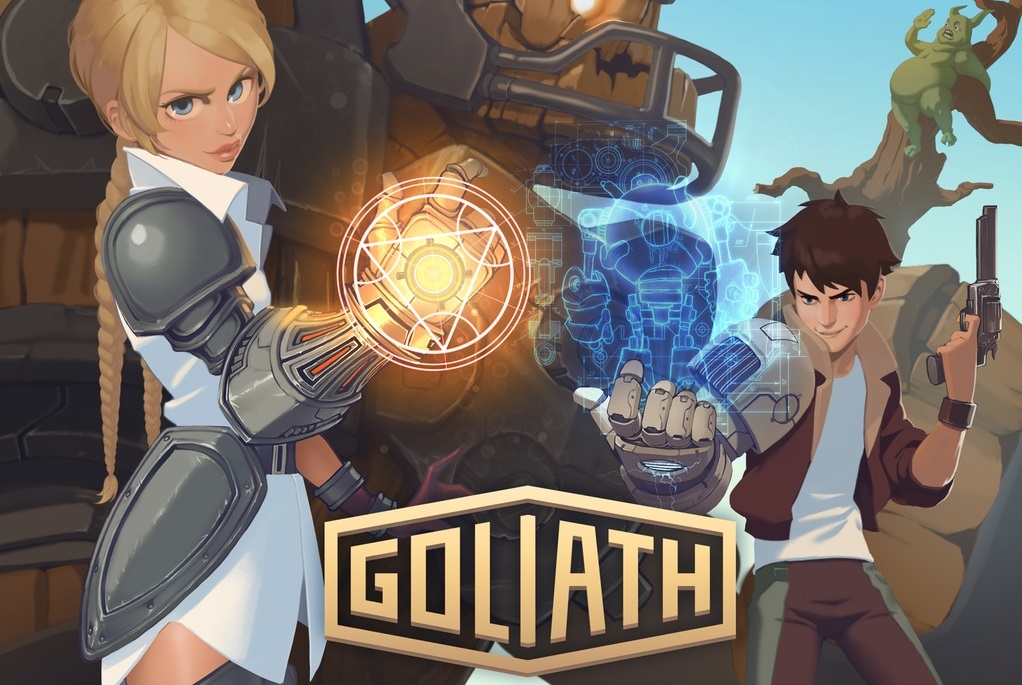




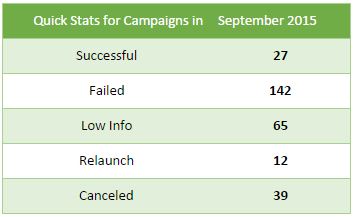
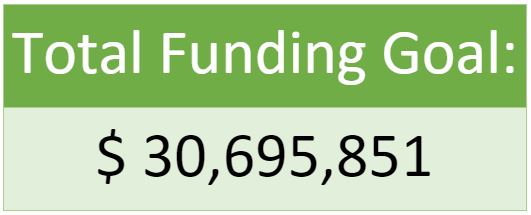
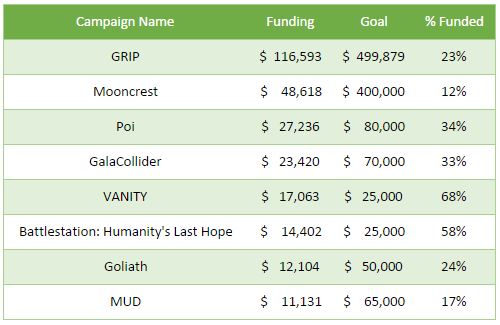
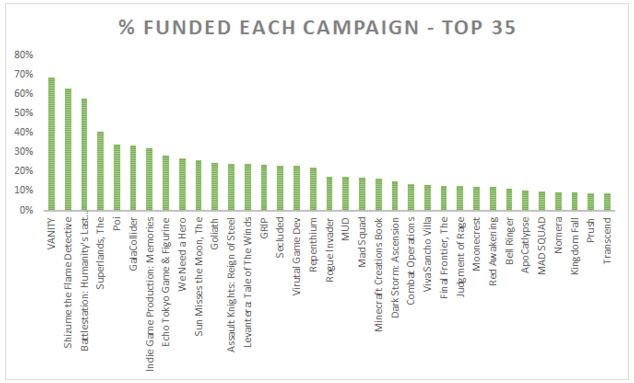



Great write-up, as usual. I find the average backer amount especially interesting, as it often (not always) shows whether or not a campaign was able to attract big spenders – either by offering great rewards or by appealing to hard-core fans.
A small detail that might be helpful in specific cases would be the highest claimed pledge level vs. the highest offered one. One of the candidates for next month’s failed list, “Guardians of Orion”, currently has an average pledge per backer of 41 dollars. Sounds healthy, until you realize that 5,000 of their roughly 10,000 dollars come from a single pledge.
Similar to that, the difference between the sum of all pledges and the actual amount listed on Kickstarter sometimes tells an interesting story about secret investments and other shenanigans. However, adding and comparing these numbers would be way too much work…
Thanks for commenting and sharing your thoughts! I find these quite interesting suggestions, especially regarding taking a note whenever a single backer or handful have pledged tremendous sums of money. You’re right that this totally skews campaigns such as these where there aren’t that many backers to begin with.
With your second comment, I agree, that sounds like a tremendous amount of work to do (unless there’s a way to automate it, but it would have be something we code ourselves — so not super likely). With that said, if there is ever a campaign which looks sketchy.. or for some other reason we’re drawn to tally up their official backer pledges versus the funding amount then it would warrant investigation!